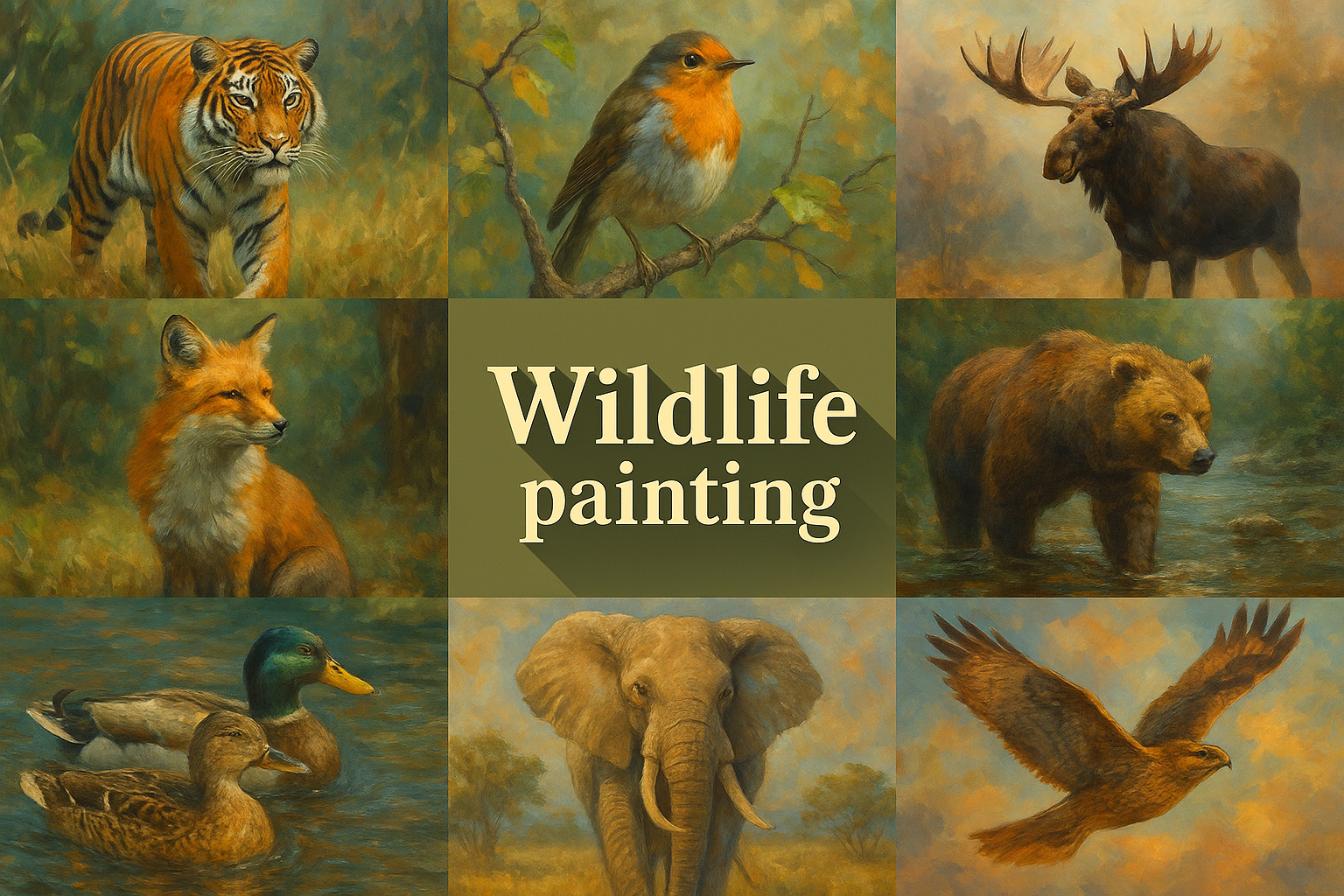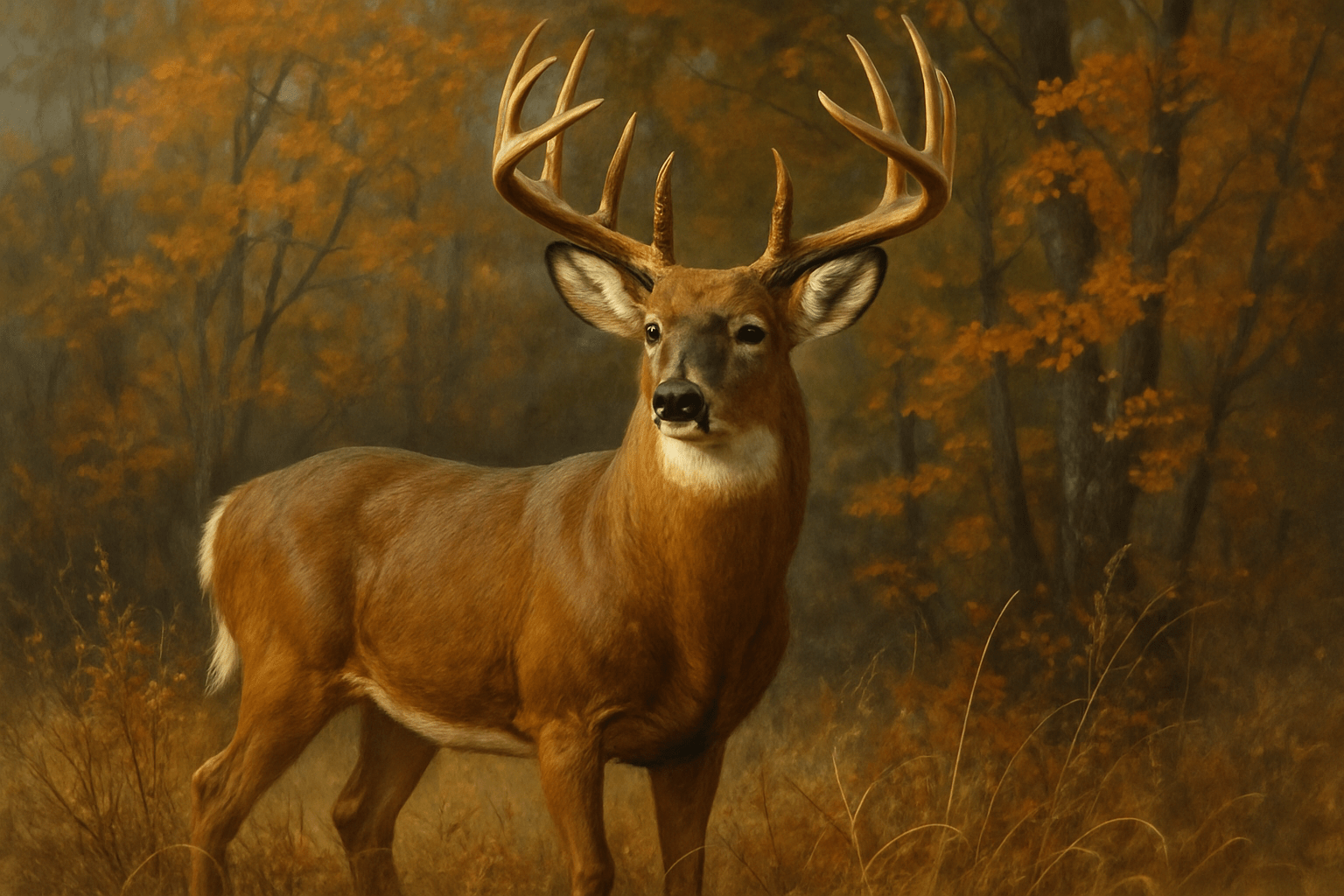
Wildlife painting
Wildlife painting is characterized by its realistic portrayal of animals in their natural habitats. The style is often detailed and precise, with an emphasis on the accurate representation of the animal’s form and color.
AOI thinking about Wildlife painting [+_~]-/
Overview and Quickfacts
Wildlife painting is a genre of art that depicts animals in their natural habitats. The paintings are usually done in oil or watercolor and often include landscapes as well. Wildlife artists seek to capture the beauty and majesty of the animals they paint, as well as the unique characteristics of each species. Many wildlife painters also strive to convey the importance of conservation through their art.
Can understand it also, as:
Animal painting, nature painting, landscape painting.
Categorize it as:
Impressionism, Modernism
.: Dreaming :.
holds a HAIKU for the art style
:. Thought is power .:
Detailed Description
Wildlife painting is a genre of art that depicts animals in their natural habitats. The genre is also known as animalier art. The first wildlife paintings were created in the early 1800s, when artists began to travel to remote areas to paint animals in their natural surroundings. The genre reached its height of popularity in the late 1800s and early 1900s, when artists such as John James Audubon and Carl Rungius became famous for their paintings of wildlife. Today, wildlife painting remains a popular genre, with artists such as Robert Bateman and David Shepherd continuing to create stunning works of art depicting animals in their natural habitats.
.. beep, beep, beep ..
<START OF TRANSMISSION>
1. Wildlife painting is a type of painting that focuses on depicting wild animals in their natural habitat. 2. Wildlife painting can be traced back to the cave paintings of the prehistoric era. 3. Some of the earliest known wildlife paintings were created by the Inuit people of North America. 4. Wildlife painting became popular in Europe during the Renaissance period. 5. Famous wildlife painters include John James Audubon, Carl Rungius, and George Catlin. 6. Wildlife painting often features animals in action, such as hunting or fighting. 7. Paintings of animals in zoos or captivity are also considered to be wildlife paintings. 8. Wildlife painting can be done in a variety of mediums, including oil paint, watercolor, and pastels. 9. Wildlife painting often captures the beauty and majesty of nature. 10. Wildlife painting can be used to raise awareness about the plight of endangered species. 11. Wildlife painting can also be used to celebrate the beauty of the natural world. 12. Wildlife painting can be found in many different settings, including homes, offices, and galleries. 13. Wildlife painting can be an expensive hobby, as it requires the purchase of expensive supplies. 14. Wildlife painting often takes a great deal of time and patience to complete. 15. Wildlife painting can be a very rewarding experience for both the artist and the viewer. 16. Wildlife painting can be a great way to connect with nature. 17. Wildlife painting can be used to teach children about the natural world. 18. Wildlife painting can be a form of therapy for both the artist and the viewer. 19. Wildlife painting can be a form of relaxation and stress relief. 20. Wildlife painting can be a lifelong passion for many people.
<EOF>
.. robbel bob
Visual Examples from our image gallery
Coming soon, we are so slow .. might never come
Artists, Paintings, and more
(be aware, can be highly speculative)
Artists (be aware, speculation possible):
1. John James Audubon (1785-1851) 2. Carl Brenders (born 1930) 3. Robert Bateman (born 1930) 4. Simon Combes (1947-2006) 5. David Shepherd (born 1931) 6. Daniel Smith (born 1965) 7. Terry Isaac (born 1953) 8. Kevin D. Macpherson (born 1947) 9. Scott Burdick (born 1963) 10. William H. Bartlett (1809-1854) 11. Edward B. Butler (1814-1902) 12. George Catlin (1796-1872) 13. Winslow Homer (1836-1910) 14. John Frederick Kensett (1816-1872) 15. John James Audubon (1785-1851)
Artworks (be aware, speculation possible)
1. The Hay Wagon, by American painter Andrew Wyeth, 1942 2. The Wolf and the Seven Little Kids, by German painter Ludwig Richter, 1850 3. The Lion and the Mouse, by French painter Jean-Baptiste Oudry, 1745 4. The Fox Hunt, by French painter FranÃÂçois Boucher, 1768 5. The Flamingos, by American painter James McNeill Whistler, 1871 6. The Birds of Paradise, by French painter Henri Rousseau, 1886 7. The Tiger in a Tropical Storm, by French painter Henri Rousseau, 1891 8. The Sleeping Gypsy, by French painter Henri Rousseau, 1897 9. The Elephant Walk, by American painter Edward Hopper, 1955 10. The Blue Rigi, by Swiss painter Karl Bodmer, 1834 11. The Grizzly Bear, by American painter Charles Marion Russell, 1910 12. The Lioness and Her Cub, by Indian painter M. F. Hussain, 1982 13. The Leopard, by French painter EugÃÂène Delacroix, 1831 14. The Rhinoceros, by German painter Albrecht DÃÂürer, 1515 15. The Stag at Sharkey’s, by American painter George Bellows, 1909
Epoch
The time period of the art style Wildlife painting is the late 19th century.
AI ART RESSOURCES (AKA, well Tools)
Helping tools -> predefined search links on other pages:











